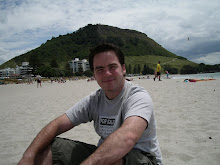Through all our research, as a group we decided that we would focus on the soul and aura of Union Street in Stonehouse, using its rich history to help represent this idea. I believe that this soul/aura can be broken down into three key areas, firstly, the amount of people in the area, the more the merrier as they say. Secondly, those people’s attitudes and opinions, if people are content then the area seems to be happy and healthy. Thirdly, the volume of the area, if the area is silent then people aren’t chatting, no music is playing, and nothing is generally going on, so therefore noise is a representation of liveliness.
The old theatre is the perfect place to show both ends of the spectrum of this soul and aura idea. This is due to the fact that around a hundred years ago, the theatre was the center of Plymouths nightlife, and well recorded as a happy and lively place. Today the theatre is a run down, broken building, closed down after a police raid which found thousands of pounds worth of harmful drugs.
So using a side window of the old theatre (called site B on the previous posts) as a staging site, I plan to represent the three elements that I believe make up the areas aura in a visual way, which is both interesting and easy to understand, whilst at the same time bringing in the rich history of site.
This will be achieved by having three separate inputs running through a website, one for each of the three elements. The first will be a simple random questionnaire on the website. It will have two responses, one positive and one negative. There will be a short repeated video being projected onto site B which will change between positive and negative images, like the test in a previous post “Street projection test mock up”, depending on the ratio of results from the questionnaire.
The other two inputs will come from onsite. One will be a decibel meter, on site, which will record the noise levels in the area and distort the image angle, static effect etc. in accordance to predetermined levels. So when the levels are within 60db and 85db, which are the levels for normal conversation up to the level for a band playing, it is considered noise of enjoyment and the image will be clear. If the levels drop below 60db or rise above 85db, this will shown by a distorted image to symbolise the noise levels being outside of this ‘enjoyment’ zone. The final input will use the Mise en abyme effect, which will be mechanically controlled by pulling the camera further away from the site, or pushing it closer. This will give it a repeating void like effect. The further the camera is away from the site the deeper the void will become, and vice versa. There will be simple movement recognition software which will take the video from a high mounted webcam, and by tracking the number of different movements will give us the number of people in the area. The fewer the people in the area, the deeper the void will be as a symbolic representation of the life being sucked out of the area.
Therefore if the area is heavily populated by people who are happy and sound like they are enjoying themselves then the image projected will be clear, colourful and fill the whole projection zone once. If however the area is abandoned, and peoples are unhappy in their responses then the projection will be unpleasant and very distorted, whilst being ‘sucked’ into the side of the building.


















































